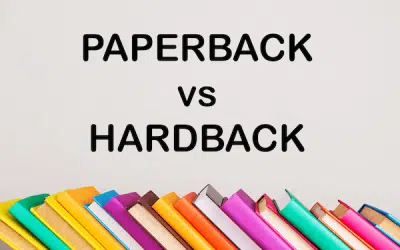
When it comes to publishing your book, one of the crucial decisions you’ll face is choosing the right format. The format not only impacts the look and feel of your book but also influences factors such as pricing, distribution, and reader perception. In this blog, we’ll explore the pros and cons of paperback, hardback, and dual format publishing to help you determine which format works best for your project.
Paperback
Paperback books are known for their flexibility, affordability, and accessibility. They are lightweight, making them ideal for readers who enjoy portability and convenience. Paperback format is typically less expensive to produce, allowing for a lower retail price point, which can attract budget-conscious readers. Additionally, paperbacks are widely available through online retailers, bookstores, and libraries, making them accessible to a broad audience.
Pros:
- Cost-effective production, leading to lower retail prices.
- Lightweight and portable, convenient for readers on the go.
- Wide distribution through various channels, including online retailers and brick-and-mortar stores.
- Ideal for mass-market appeal and reaching a broad audience.
Cons:
- Less durable than hardbacks, prone to damage from frequent handling.
- Limited options for customization in terms of cover design and materials.
- Perceived as less prestigious or collectible compared to hardbacks.
Paperback and Hardcover (Dual Format)
In recent years, dual format publishing has emerged as a popular option that combines the benefits of both paperback and hardback formats. Authors have the flexibility to release their books in multiple formats simultaneously. This approach allows authors to cater to different reader preferences and maximize their reach and revenue potential.
Pros:
- Flexibility to offer books in multiple formats, appealing to a broader audience.
- Opportunity to cater to different reader preferences for affordability, durability, or collectibility.
- Increased revenue potential by offering premium hardback editions alongside more affordable paperback options. Versatility for marketing and promotional purposes, targeting different segments of the market.
Cons:
- Requires additional investment in production and distribution to offer multiple formats.
- Complexity in managing inventory, pricing, and marketing strategies for each format.
When deciding on the format for your book, consider factors such as your target audience, budget, distribution strategy, and personal preferences. Whether you choose paperback, hardback, or a combination of both, each format offers unique advantages and challenges. By carefully weighing your options and understanding the needs of your readers, you can make an informed decision that maximizes the impact and success of your book.